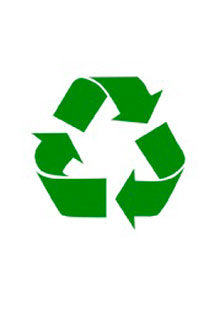What "Green" Means
Organic, natural, sustainable...who can keep all the eco terms straight? Here's your easy green cheat sheet.
 — The certified organic label is regulated by the USDA and indicates the absence of most conventional fertilizers and chemicals. A processed product (one that contains more than two ingredients) must have at least 95 percent organic material.
— The certified organic label is regulated by the USDA and indicates the absence of most conventional fertilizers and chemicals. A processed product (one that contains more than two ingredients) must have at least 95 percent organic material.— The Demeter-certified Biodynamic designation means that farmers use practices emphasizing a holistic connection with nature. The nonprofit has been certifying produce and wine since 1982 and bans harmful chemicals and synthetic fertilizers.
— Fair-trade products like coffee and chocolate are certified by the Fair Trade Federation, an international group working to relieve poverty. They ensure that producers receive a fair wage and that production practices promote long-term environmental sustainability and community development.
— Green Seal is an independent nonprofit that promotes the manufacture, purchase, and use of environmentally responsible products. The seal accredits everything from hand soap to hotels.
— Local generally refers to products grown within a 100-to-150-mile radius. Transporting goods locally uses fewer fossil fuels than shipping them from around the world. Plus, buying local supports your community.
— Natural means that the product contains no artificial colors or flavors, but the term can be misleading (and misapplied!) because it isn't certified or regulated.
— Post-consumer recycled means the material has been sold, used, and then recycled. It's the gold standard for recycled products.
— Sustainable forestry paper products are certified by the Forest Stewardship Council and come from forests that are managed for long-term productivity and biological diversity.
Even if you can't buy a strictly green product, you can still make any purchase easier on the environment:
What you can do:
— Choose items with minimal packaging, or buy in bulk.
— Bring your own bag.
— Donate the item you're replacing.
— Buy secondhand.
— Wash your clothing in the cold-water cycle—and cut roughly 85 percent of the energy used.
— Use rechargeable batteries, and unplug chargers and appliances.
— Choose household cleaning products that have an ingredient list. Products with harmful chemicals are less likely to have one.



